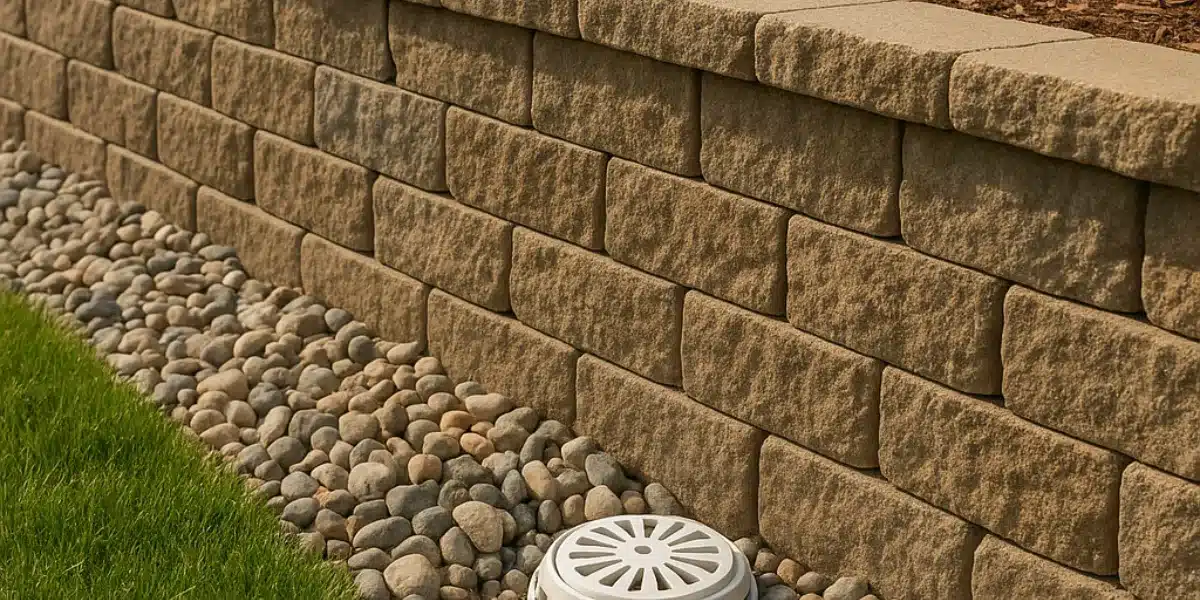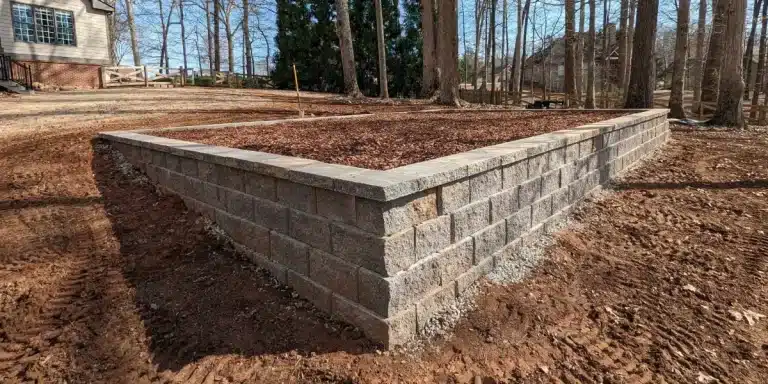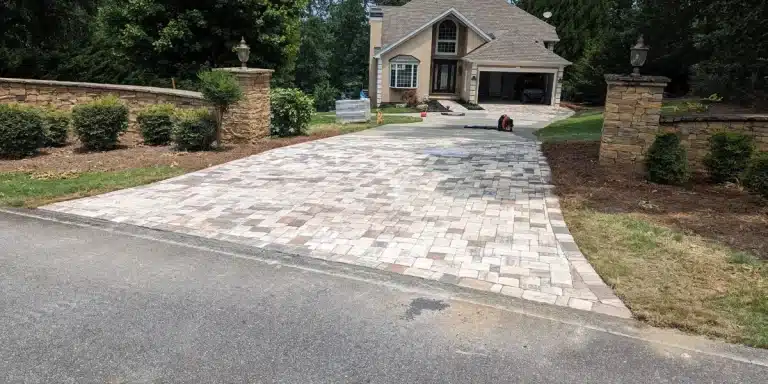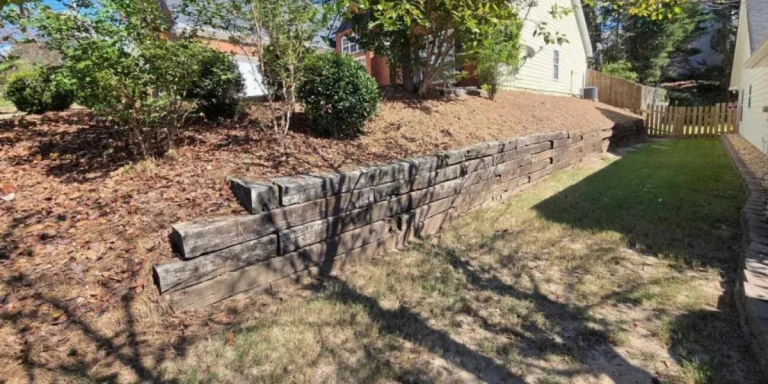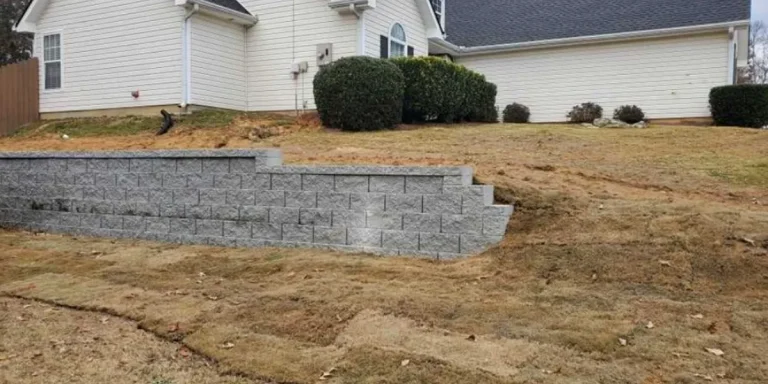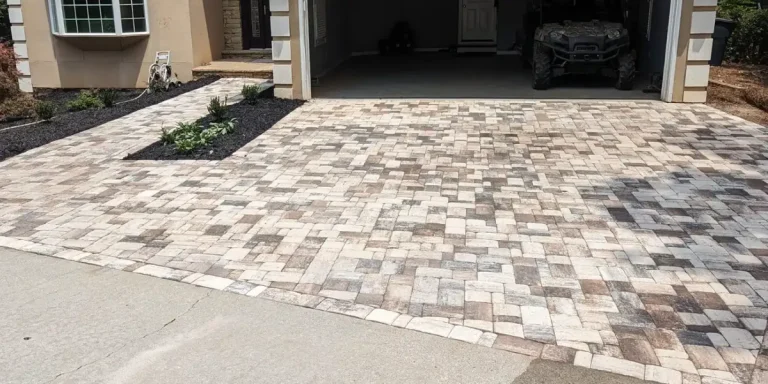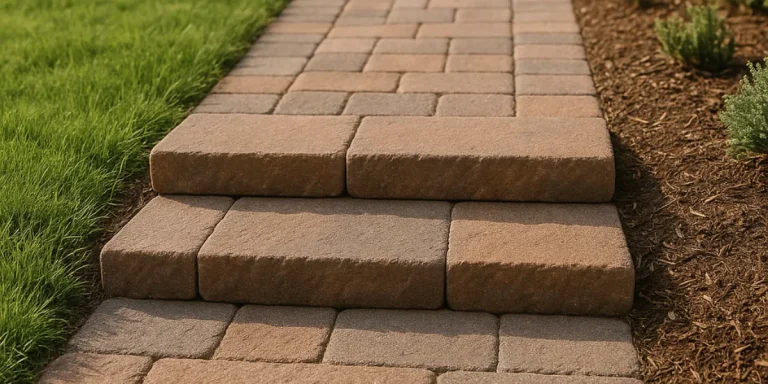Drainage Fixes for Water Behind Retaining Walls
Excess water behind a retaining wall isn’t just a nuisance—it’s a serious structural threat. If left unchecked, it can lead to wall bulging, leaning, cracking, or even collapse. At Razor Sharp Lawn and Landscape, we specialize in diagnosing and solving drainage issues behind retaining walls throughout Gainesville and Northeast Georgia.
Whether your wall is showing signs of stress or you're planning a new installation, understanding proper drainage is the key to long-term performance.
Why drainage behind retaining walls matters
Retaining walls are designed to hold back soil and reshape sloped terrain, but they also end up holding back something just as persistent: water. In areas like Gainesville and Northeast Georgia, where heavy rainfall and clay soils are common, poor drainage behind a retaining wall can quickly turn into a serious structural issue.
When water becomes trapped behind the wall, it creates hydrostatic pressure—the force exerted by standing water. Unlike soil, water doesn’t compact or stay still. It presses constantly against the backside of the wall, especially after storms or prolonged wet conditions. If this pressure isn’t relieved, it can cause:
-
- Cracking or bowing in the wall face as the materials struggle to hold back both soil and water
- Erosion of the backfill, washing out the gravel or soil behind the wall and destabilizing the structure
- Sinking or shifting of the wall footing, especially if water undermines the base layer
- Visible water pooling at the bottom of the wall, or even seepage through the seams in block walls
- Premature failure of edge restraints or capstones due to constant movement and freeze/thaw cycles
These issues aren’t cosmetic—they indicate a compromised wall that could lean, collapse, or fail entirely if not addressed.
Installing proper drainage—such as gravel backfill, weep holes, perforated pipes, and surface grading—protects your investment and ensures your wall performs as intended for years to come. At Razor Sharp Lawn and Landscape, we incorporate proven drainage techniques into every wall we repair or build, so you never have to wonder if your structure is at risk.
Signs your retaining wall has a drainage problem
Drainage issues behind retaining walls often start small but can lead to major failures if ignored. Knowing what to look for early can save you from a costly rebuild down the line. Here are the most common warning signs:
-
- Water stains or streaking along the face of the wall
Discoloration or mineral deposits often indicate water is leaking through joints or seeping out from behind the wall, a clear sign of pressure buildup or saturated backfill. - Soft, soggy soil near the base
If the ground in front of the wall is constantly wet or muddy, water may be escaping from behind the wall without proper control, saturating nearby soil and weakening the structure’s foundation. - Leaning or bowing sections of the wall
When hydrostatic pressure becomes too great, the wall may begin to tilt outward or show visible curvature. This is one of the most serious symptoms of a failed drainage system and should be addressed immediately. - Weep holes that don’t drain or constantly drip
Blocked, clogged, or missing weep holes prevent water from escaping, while persistent dripping can indicate water is accumulating behind the wall faster than it can be released. - Soil erosion or bare patches above the wall
If water isn’t directed properly, it can wash away topsoil from the slope above the wall, leaving ruts, exposed roots, or barren patches of ground—especially after heavy rain.
- Water stains or streaking along the face of the wall
These problems are very common in areas like Gainesville, Hoschton, and Flowery Branch, where clay-heavy soils and steep slopes create a perfect storm for drainage issues. At Razor Sharp Lawn and Landscape, we’ve corrected dozens of walls that failed prematurely because they weren’t built with proper drainage systems in place.
If you’re seeing any of these warning signs, don’t wait—a timely inspection and fix could save you from a complete rebuild.
How Razor Sharp Lawn and Landscape solves drainage behind retaining walls
At Razor Sharp Lawn and Landscape, we believe that the key to a long-lasting retaining wall is not just how it's built—but how well it handles water. That’s why we approach every wall repair, rebuild, or new installation with proven drainage techniques tailored to Georgia’s clay soils and variable terrain. Here's how we ensure your wall stands strong for years to come:
1. Weep holes
Weep holes are small, evenly spaced openings at the base of the wall that allow trapped water to escape instead of building up behind the structure.
-
-
- Relieves hydrostatic pressure that could otherwise crack or push the wall outward
- Minimizes surface staining caused by moisture seepage through the face of the wall
- Especially useful for shorter garden walls, decorative block walls, or walls without room for underground drains
- We often retrofit weep holes into older walls that were built without any drainage considerations
-
2. Gravel backfill
Instead of backfilling the wall with dense, compacted soil that holds moisture, we use a graded layer of clean, angular gravel (such as #57 stone).
-
-
- Promotes rapid water movement down to the drain pipe below
- Prevents water retention and soil compaction, which are common causes of wall failure in Gainesville’s clay-heavy landscapes
- Adds internal stability to the wall system by reducing lateral pressure
- Acts as a natural filter, helping direct water to drainage systems without clogging
-
3. Perforated drain pipe (French drain)
At the bottom of every retaining wall we build or restore, we install a perforated pipe wrapped in fabric and encased in gravel—commonly referred to as a French drain.
-
-
- Collects and transports water away from the base of the wall to a safe discharge point
- May connect to pop-up emitters, dry creek beds, or downhill drainage basins
- Especially critical for walls over 4 feet tall or those supporting driveways or slopes
- Helps eliminate soggy spots and erosion near the wall footing
-
This is one of the most important components for structural walls in areas like Hoschton, Flowery Branch, and Buford, where heavy rainfall and runoff are common.
4. Geotextile fabric
Between the soil and the gravel backfill, we install a durable geotextile fabric that acts as a separator and filter.
-
-
- Prevents fine soil particles from migrating into and clogging the gravel layer or drain pipe
- Improves long-term performance of the drainage system by keeping it free-flowing
- Helps reduce settlement and soil shifting by stabilizing the layers
- A must-have in Georgia's red clay zones, where silt can easily choke a poorly protected drain
-
5. Surface grading and runoff control
Even the best wall drainage won’t work if surface water is constantly pouring over the top. That’s why we also evaluate and correct the grading of the slope above and around the wall.
-
-
- Diverts water away from the wall before it becomes a problem
- May involve re-contouring the surrounding land, installing catch basins, building swales, or adding drainage inlets
- Ensures stormwater flows safely through designed channels, rather than overloading the wall
- Especially useful for walls installed near homes, patios, or steep hillsides in Winder, Jefferson, and Dacula
-
Every wall we work on—whether it’s a failing timber wall that needs replacing or a new installation for a sloped property—is engineered for performance. If you're dealing with erosion, bulging walls, or soggy areas nearby, Razor Sharp Lawn and Landscape has the solution.
When a wall must be rebuilt
While some drainage problems can be addressed with retrofits or external solutions, there are cases where the wall itself is structurally compromised beyond repair. If your retaining wall shows any of the following issues, it may need to be fully removed and replaced:
-
- Severe leaning or bowing that suggests foundational failure
- Large cracks or gaps forming between wall blocks or at the base
- Outdated materials or construction—such as timber or unreinforced block—used in a wall supporting heavy loads or slopes
- Signs of erosion or soil movement behind the wall that continue despite surface fixes
In these cases, trying to patch the problem can be a waste of time and money. The safest, most reliable solution is a full rebuild with proper engineering and modern drainage systems.
At Razor Sharp Lawn and Landscape, we specialize in complete wall replacements using professional-grade materials like Keystone® retaining wall systems. These interlocking concrete blocks are engineered for strength, durability, and performance on challenging Georgia soils. Combined with proper backfill, drainage pipe, and surface grading, our walls are built to stand the test of time—even under pressure from hillsides, patios, or driveways.
Whether your existing wall has failed due to poor design or simply aged out, we’ll design and construct a replacement that protects your landscape and enhances your property’s value.
Proudly serving Northeast Georgia
We offer retaining wall installation, repair, and drainage solutions in:
-
- Gainesville
- Hoschton
- Braselton
- Flowery Branch
- Buford
- Winder
- Jefferson
- Dacula
- Oakwood
- Commerce
If you’re seeing signs of wall failure, don’t wait for the problem to get worse.
Stop the water damage before it starts
Don’t wait until your retaining wall fails. At Razor Sharp Lawn and Landscape, we combine expert drainage knowledge with proven construction methods to deliver lasting results.
Call today or request an estimate online to get a professional assessment. We proudly serve homeowners across the Gainesville area with retaining wall repairs, rebuilds, and drainage solutions that stand the test of time.

